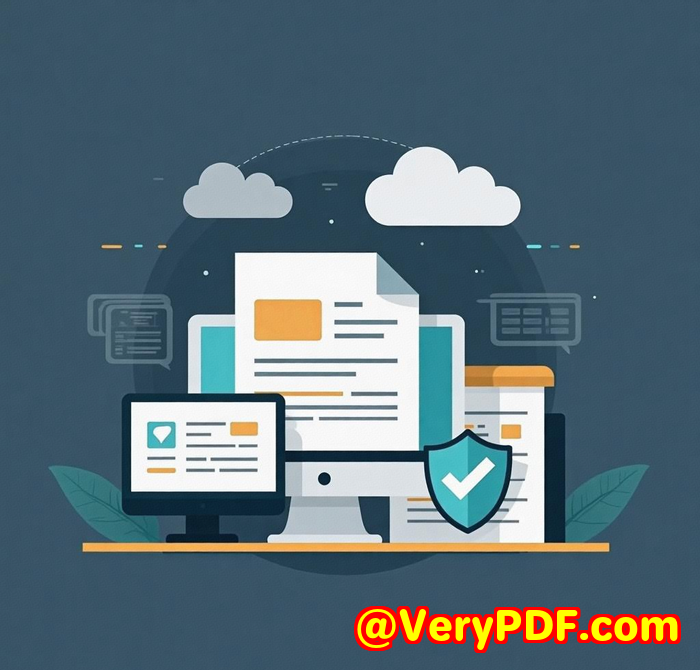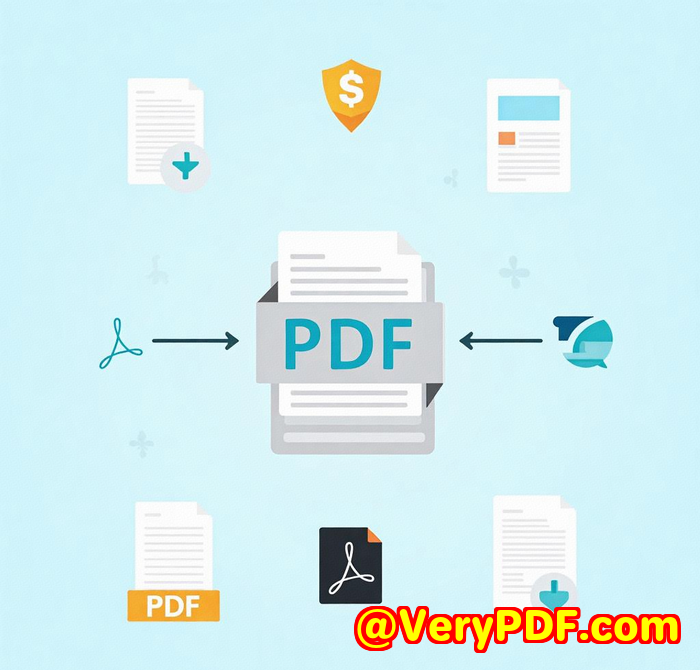Comparing VeryPDF and PDFElement Which Tool Provides Better User Interface for PDF Conversions
Comparing VeryPDF and PDFElement: Which Tool Provides Better User Interface for PDF Conversions?
Every time I’ve had to convert web pages into PDFs for work, it’s felt like walking through a minefield. Different tools promise easy solutions, but the reality is often clunky interfaces, buggy conversions, or complicated setups. If you’ve been hunting for a smooth, reliable way to turn HTML into PDFs without pulling your hair out, this is the exact problem I facedand why I decided to put VeryPDF Webpage to PDF Converter API for Developers head-to-head with PDFElement to see which really nails the user interface and PDF conversion experience.

Here’s the thing: I’m not just a casual user. I work with web content regularly, needing high-quality PDF exports for reports, legal documents, and marketing materials. So, ease of use, speed, and accuracy aren’t just nice to have they’re essential. Let me walk you through what I discovered.
Why I Chose VeryPDF Webpage to PDF Converter API
First, a bit about the tool. VeryPDF’s API is designed for developers and businesses that want to automate HTML to PDF conversions without fuss. It uses a Google Chromebased rendering engine, which means it handles modern web standards like CSS flexbox, grid layouts, custom fonts, and responsive design flawlessly.
What sold me on it initially was the promise of fast conversionsunder 2 secondsand powerful security features, including 128-bit encryption. As someone who sometimes needs to convert sensitive content, that’s a huge bonus.
The tool is aimed at a wide audience: developers integrating PDF conversion into apps, marketing teams needing to generate social media banners automatically, healthcare companies requiring HIPAA-compliant document handling, and basically anyone who needs fast, reliable web-to-PDF conversion.
The User Interface and Integration Experience
Let’s talk interface. PDFElement, which I’d used before, has a solid desktop app that’s user-friendly for occasional conversions and editing, but it felt limited when scaling automation workflows. It’s great for manual tweaking, but I found myself repeating steps for batch jobs, which was a pain.
VeryPDF’s strength lies in its API-first approach. This isn’t your average click-and-drag software; it’s built for seamless integration. If you’re a developer or tech-savvy user, you’ll appreciate how straightforward it is to call the API via RESTful endpoints, regardless of your programming language. That means you can automate thousands of conversions without leaving your command line or app.
Here’s what stood out in the UI and experience:
-
Simple REST API Calls: I could convert HTML from raw code or URLs in just a couple of lines of code.
-
Customization on the Fly: You can set paper size, add headers and footers, inject custom CSS or JavaScript to tailor the PDFs exactly how you want.
-
Real-Time Previews: The API also offers screenshot functionality for website previews, which was clutch for creating dynamic content previews.
-
Scalable Batch Processing: The webhook system allowed me to queue bulk jobs and get results without babysitting the process.
PDFElement, on the other hand, while intuitive, lacks this developer-friendly automation edge. It’s perfect for hands-on editing but falls short for companies or teams wanting to automate large-scale conversions with minimal manual input.
Key Features and How They Made a Difference
-
Browser-Based Rendering Engine
This feature blew me away. Because VeryPDF uses a real Chrome engine, it converts pages with near-perfect fidelity, preserving layout, fonts, and images exactly as seen in a browser. PDFElement’s engine sometimes struggled with complex CSS or responsive designs, producing PDFs that looked off, especially with grid or flexbox layouts.
-
Security and Compliance
Handling sensitive documents is a minefield. VeryPDF’s 128-bit encryption and HIPAA compliance gave me peace of mind. The ability to restrict access rights and decide whether files are stored or deleted post-conversion meant I could easily fit it into secure workflows.
-
Advanced PDF Customization
Adding custom headers and footers automatically saved me tons of time. Whether I needed page numbers, timestamps, or branding, VeryPDF’s API let me inject these elements programmatically. PDFElement’s manual approach required extra clicks and was slower to scale.
-
Speed and Scalability
VeryPDF’s promise of under 2-second conversions was spot on in my experience. When generating hundreds of PDFs, this speed made a massive difference. PDFElement, being desktop-based, was slower and more resource-intensive for batch tasks.
Real-World Use Cases I Tried
-
Marketing Campaign Automation: Using VeryPDF, I generated customised Open Graph images and PDF banners directly from CMS data, speeding up content creation.
-
Legal Documentation: Converted lengthy web-based contracts into secure PDFs with encrypted access critical for compliance.
-
Healthcare Reporting: HIPAA compliance meant sensitive patient data was protected during conversion and storage.
-
E-commerce Receipts: Automatically created branded, professional invoices from HTML templates saved hours on manual formatting.
Comparing the Two: Pros and Cons in User Experience
VeryPDF Pros:
-
Developer-friendly API integration with simple, clear documentation.
-
Fast, reliable conversions preserving complex layouts.
-
Robust security and privacy controls.
-
Scales effortlessly for bulk operations.
-
Flexible customization options.
VeryPDF Cons:
-
Requires some technical know-how or developer support to set up initially.
-
No traditional desktop GUI it’s API-centric.
PDFElement Pros:
-
Easy desktop application for manual editing.
-
Good for one-off PDF conversions or small-scale editing.
-
Familiar UI for non-technical users.
PDFElement Cons:
-
Lacks automation and batch processing features.
-
Sometimes inconsistent rendering on complex web pages.
-
Not designed for integration into workflows or apps.
Final Thoughts and Recommendation
If you’re juggling automated, high-fidelity PDF conversions with a need for robust security and fast turnaround, VeryPDF Webpage to PDF Converter API for Developers is hands down the smarter choice.
I’d recommend this API to developers, marketing teams, legal departments, healthcare organisations, or any business looking to scale document conversions without sacrificing quality or control. It took me from tedious manual conversion tasks to a fully automated pipeline that works seamlessly in the background.
For those who prefer a desktop solution for occasional PDF editing, PDFElement remains a solid optionbut if your work demands automation, reliability, and a developer-friendly environment, VeryPDF has you covered.
Ready to streamline your PDF workflow? Click here to try it out for yourself: https://www.verypdf.com/online/webpage-to-pdf-converter-cloud-api/try-and-buy.html
Custom Development Services by VeryPDF
Sometimes, off-the-shelf just doesn’t cut it. VeryPDF understands that every business has unique needs. That’s why they offer custom development services tailored to your exact requirements.
Whether you need tools that work on Linux, Windows, macOS, or mobile platforms like iOS and Android, VeryPDF can build custom utilities using technologies such as Python, PHP, C/C++, .NET, JavaScript, and more.
From creating virtual printer drivers that convert print jobs into PDFs or images, to hooking into Windows APIs for advanced monitoring, to developing OCR, barcode recognition, and document form generators VeryPDF’s expert team can create solutions that integrate seamlessly with your existing systems.
Have a special project? Reach out to VeryPDF via their support center at http://support.verypdf.com/ to discuss how they can help transform your document workflows.
FAQ
Q: Can I use VeryPDF without a developer background?
A: VeryPDF’s API is designed for developers, but their documentation makes it accessible if you have basic programming skills. For non-developers, partnering with a developer or team is recommended.
Q: Does VeryPDF store my documents after conversion?
A: By default, no. Your data is not stored unless you enable optional storage for up to one month.
Q: Can I convert batches of web pages to PDF?
A: Yes, the API supports batch and parallel processing to handle large volumes efficiently.
Q: How secure is the PDF conversion process?
A: VeryPDF offers 128-bit encryption and complies with HIPAA, ensuring top-notch data security.
Q: What happens if I exceed my usage plan?
A: Additional conversions continue as overages and are billed separately, giving you uninterrupted service.
Tags
-
PDF conversion API
-
HTML to PDF automation
-
Secure PDF generation
-
VeryPDF Webpage to PDF Converter
-
Batch PDF conversion



